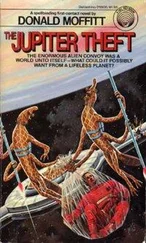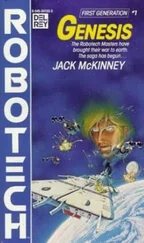Their society had had fifty thousand years to adjust to the new truth. How had it transformed itself? Bram wondered. He would never know. And every hour another few years passed on the world he had left.
He shook off the thought and returned to the conversation.
“Are you sure we’ll find a hypermass to brake by when we get there?” he said.
Jun Davd looked at him reproachfully. “You’re forgeting all I taught you. Scratch a galaxy like ours and you’ll find a hypermass at the center. Relic of the quasar epoch. It’s a necessary consequence of the way galaxies are formed.”
“I know. A giant black hole.”
Jun Davd nodded. “A black hole with a mass of anywhere up to several hundred million swallowed suns. The centers of galaxies are violent places, and they’re very crowded. They stir up brews of colliding suns and relativistic electrons. They throw off x-ray jets. Sometimes they explode. The different events depend on the size and spin of the black hole and what it has to feed on and the way it chooses to express itself. And maybe the normal galaxies we see are simply the violent ones in a quiet phase of their history.”
“You paint a vivid picture. What kind of core are we diving into now?”
Jun Davd did not smile. “One that worries me,” he said.
Bram was instantly alert. “What do you mean?”
“For one thing, there are more young stars than theory predicts. And the infrared radiation getting through the dust clouds keeps increasing the farther in we travel, especially at the wavelengths associated with star formation. There are too many stars being born in there.”
Bram searched his rusty memory. “You told me yourself, years ago, that emissions at around the hundred-micron wavelength increase at a fairly uniform rate as you go in.”
“You don’t take my meaning. At this point we’re seeing by light that won’t reach the Father World for another fifty thousand years. We’ve jumped fifty thousand years into their future—and the future of those former selves of ours that made those infrared observations. The process, whatever it is, is speeding up. Something odd is happening behind those dust clouds. Something recent.”
“What do you think it is?”
Jun Davd switched off the display showing the outside stars and punched in a new code. A galaxy appeared within the screen, shining by the glossy light of computer simulation. It was a very pretty spiral with a regular shape. A second galaxy appeared to its left—another spiral, slightly smaller.
“You’re looking at our galaxy the way it appeared some hundreds of millions of years ago, before we collided with the Bonfire. The smaller spiral is the Bonfire as it must have looked before the encounter tore it all out of shape. You’re about to see a computer reenactment.”
“I’m impressed.”
“It wasn’t as big a job as you think. The basic computer model is an old one. I brought it aboard with my data files. I first ran into it as a young astronomy student. All I did was feed in a lot of updated data, including the fifty thousand years’ worth we’ve collected on our trip so far.”
“Go ahead. I’m ready.”
Jun Davd set the display going with a final poke of his finger. The point of view rotated slightly to give more of a side view, and the smaller galaxy that was the Bonfire began moving toward the larger one. Their directions of rotation were opposite, like two wheels rolling toward each other.
“They’re going to grind together with a lot of extra kinetic energy,” Bram commented.
“Watch it here. We’ve got some tidal forces coming into play.”
The larger galaxy began to draw long streamers out of the Bonfire. At the same time its own spiral structure began to stretch and deform.
“I’m going to punch in a couple of overlays at this point,” Jun Davd said. “The red lines are infrared, the white ones radio.”
His long gnarled fingers played over the touch pad, and a pair of overlapping contour maps appeared, more or less conforming to the optical shapes, surrounding them with concentric squiggles and squeezing close together at the centers of the galaxies and in the areas of encounter.
The two galaxies continued to tear at each other as their arms brushed and mingled. It was not a head-on collision, but it was damaging enough. Gauzy ribbons that must have contained millions of stars were stripped away and left to evaporate into space. The computer could not infer the collisions of individual stars—such collisions would have been rare even if the two galaxies had fully interpenetrated—but it could visualize the effects of the gas clouds slamming together.
“Tremendous rise in temperature,” Jun Davd said. “And intense radio emissions.”
The superimposed contour maps writhed, grew brighter, pulsed faster and faster.
“Now, watch closely,” Jun Davd said.
The spiral arm closest to the encounter flared and turned blue as millions of new stars were born out of the clouds of disrupted gas. The Bonfire sailed past, now a blazing blob of light that had lost its spiral shape. The larger galaxy squeezed, then stretched, responding to the gravitational tug. The coils on the opposite side, now released, loosened and changed their pitch. The blue arm tried to follow the Bonfire, reaching after it and losing more stars in the process.
“Now you know why Skybridge is blue,” Jun Davd said.
“I can see that the passing of the Bonfire rejuvenated the nearer spiral arm as a stellar nursery,” Bram said. “But what has that got to do with the interior of the galaxy?”
“Keep looking at the radio and infrared maps,” Jun Davd said.
Over an interval that must have represented a period of hundreds of millions of years after the encounter, the heat and the radio activity pulsed inward, like ripples from a stone seen in reverse. As the computer simulation neared the present, Bram could see the pattern of infrared intensity settle into the profile he was familiar with, growing stronger as it approached the central regions.
But there was more to it than that—a winking of blue light in a shell that followed the wake of the wave and shrank toward the galactic hub.
“It’s the infall of that peeled-off gas, touching off another era of star formation,” Jun Davd said. “By now, it’s in the core, feeding the black hole. Or maybe I should say overfeeding it.”
“We can handle it even if it does turn out to be bigger than we expect. After all, even a black hole with a few billions of solar masses can’t have a diameter of more than a fraction of an astronomical unit, and when we swing around it, we’ll make sure to stay a safe distance from the accretion disk.”
“You’re considering the black hole solely as a gravitational entity. I’m more concerned with what it might be doing in there.”
“Such as?”
Jun Davd added a couple of worried furrows to the fan of deep creases in his forehead. “You saw what our encounter with the Bonfire did to the outer geometry of the galaxy. I’m wondering if it stirred up things in the inner regions as well.”
“That happened hundreds of millions of years ago.”
“Exactly,” Jun Davd said, showing his perfect teeth in a mirthless grin. “Time enough for it to ripen.”
“Jun Davd says it’s thick in there,” Bram said.
“Don’t I know it.” Jao sighed. “We’re picking up gamma too fast. The ramscoop uses whatever falls into it, and I don’t dare monkey with the fields this close to the bend in our hyperbola.”
“But we still haven’t reached the limits of our projected gamma for leaving the galaxy?”
“No, but I’d hoped to make up most of the difference on the way out. We don’t want to be going too fast for the hypermass to grab us. And I don’t want to get too close to a thing like that.” He scratched his ribs reflectively. “Now I’m going to have to shave it finer than I like in there.”
Читать дальше












